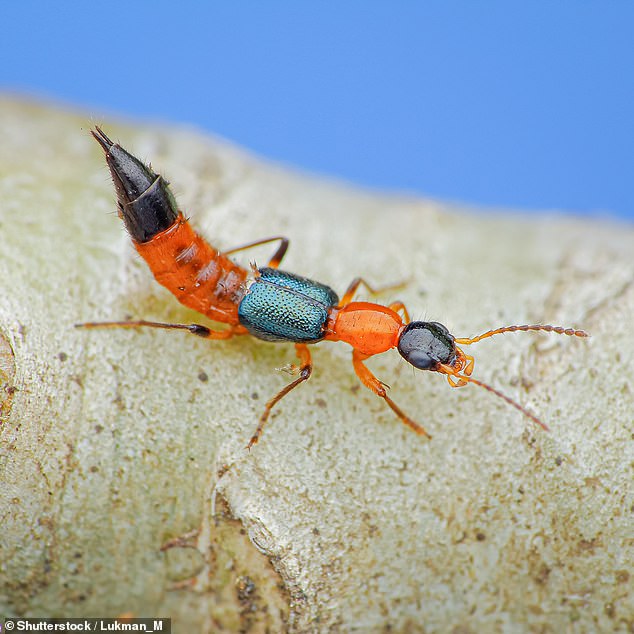The toxic tomcat beetle bug that can leave you in crippling agony and wreck your dream Bali holiday – but chances are you’ve never even heard of it
A holidaymaker’s dream trip ended in agony when she was scarred by a tropical insect, leaving her in pain and unsightly red welts on her legs.
Natalie Carroll, 24, was on vacation in Bali, Indonesia, when she noticed red streaks starting to appear on her upper left leg on Thursday, November 7.
The Australian TikToker initially thought she had been stung by a jellyfish, until “extremely painful” blisters began to break out on her skin later that evening.
The next day, as the pain increased, Mrs. Carroll rushed to a doctor who told her he was “90 percent” certain she had been attacked by a hangover.
Tomcat beetles do not bite or sting their victims, but instead release an aggressive venom that causes severe burning, stinging, itching and blistering.
Despite the fact that measurements are only made between them Measuring 7 and 10 mm in length, the beetle’s poisonous venom is very potent.
Mrs. Carroll was given oral antibiotics to prevent the wound from becoming infected, but the pain and scarring continued to worsen over the next few days.
She believes the bug may have crawled up her leg while she slept and has warned others to be extra careful around strange insects in the future.
Natalie Carroll, 24, developed deep red welts and blisters on her left thigh while on holiday in Bali, caused by the venom of a hangover beetle.
Mrs. Carroll noticed that the inflamed streaks along her thigh quickly worsened within hours of realizing they were there.
‘When I woke up [on Friday] I had some small blisters and I thought, “I need to call a doctor,” she said on social media.
The welts had become “extremely painful” by the time Ms Carroll was told by her doctor that she had probably come into contact with a hangover.
By Saturday the blisters were so painful that her thighs were too tender to even touch.
Ms Carroll said she became wary of infections when two of her largest blisters burst over the weekend.
“I had to keep putting ointment on it to hide it from the Balinese air because it’s dirty here,” she said.
‘Honestly, the worst part about this is that I can’t swim the whole trip and it’s so hot in Bali… and I can’t even shower properly. I can’t get it wet at all.’
Mrs. Caroll told 9News that she was just grateful that a doctor was able to diagnose her wound so quickly and that she wasn’t “too concerned” about possible scarring.

Tomcat beetles, also known as rove beetles, do not actually bite their victims, but instead release a very potent venom when swept aside or crushed
Tomb beetles, also known as rove beetles, are usually black or brown with slender bodies and short forewings.
Typically they thrive outdoors, but during heavy rainfall the beetles have been known to migrate to drier areas.
Their venom can cause a reaction similar to “chemical warfare,” according to the Australian Department of Health.
The beetle secretes a chemical called pederin when brushed or crushed, which can be easily absorbed through the skin of another creature.
The poison quickly causes redness of the skin, painful, burning sensations and blisters that are difficult to removeeat.
It is recommended to use warm, soapy water to immediately cleanse the affected area before thoroughly applying an antiseptic lotion or antihistamine cream.
It can take up to ten days to fully recover from the tomcat beetle’s venom.
